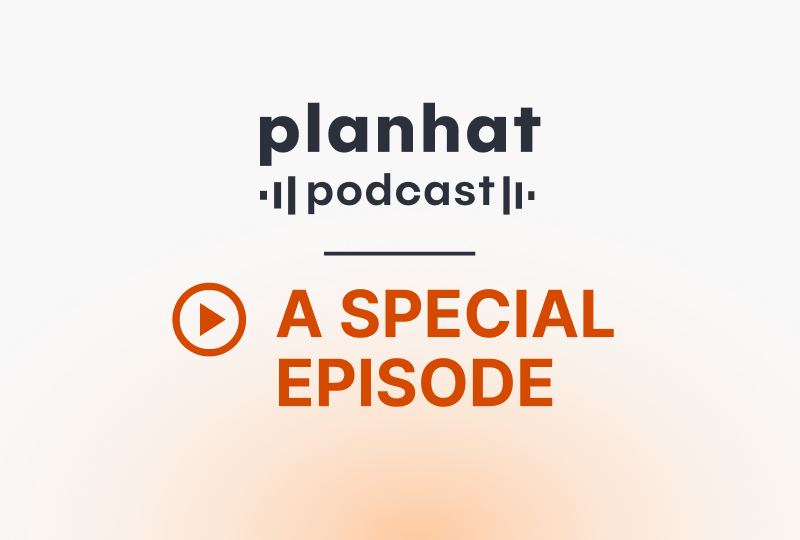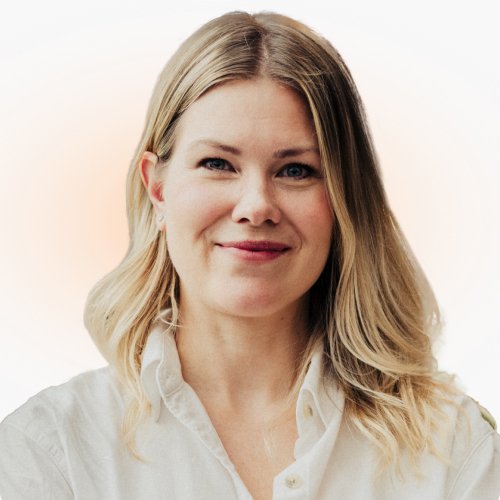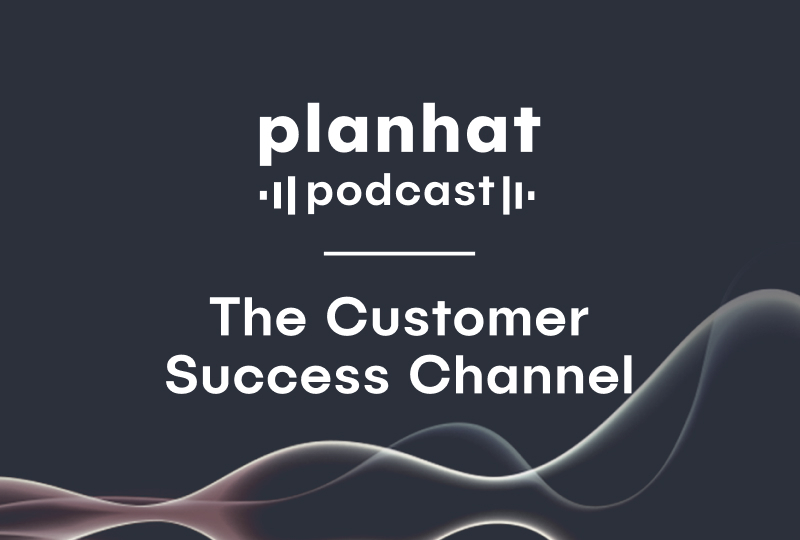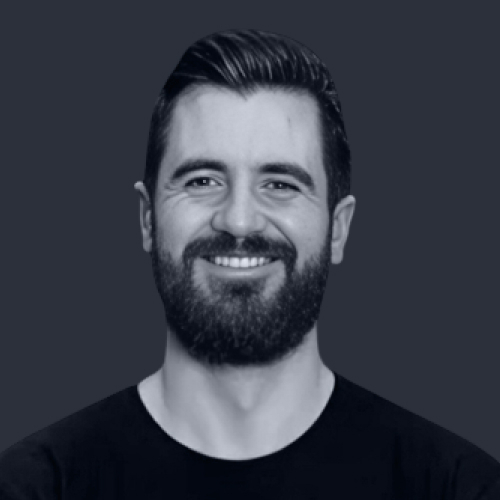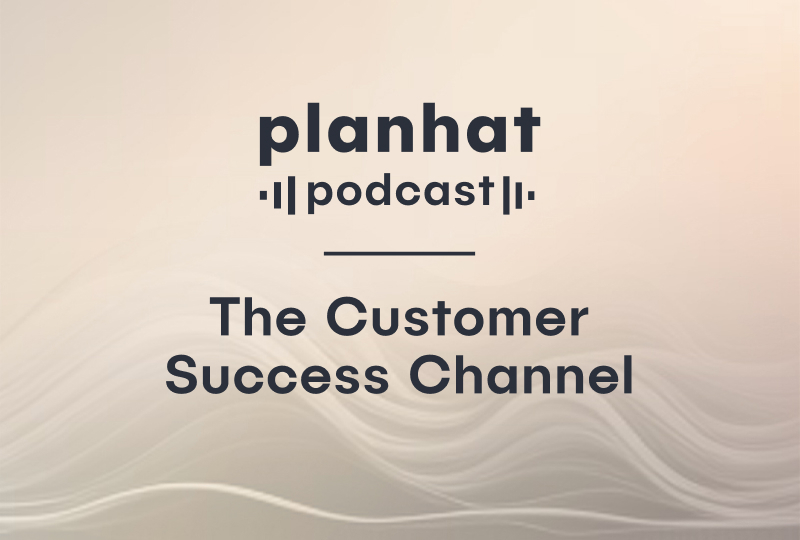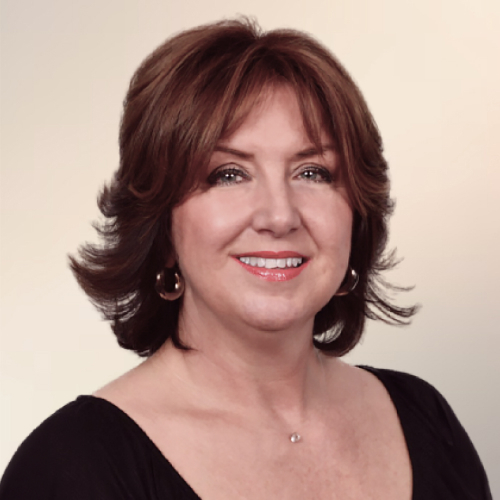2018-02-19
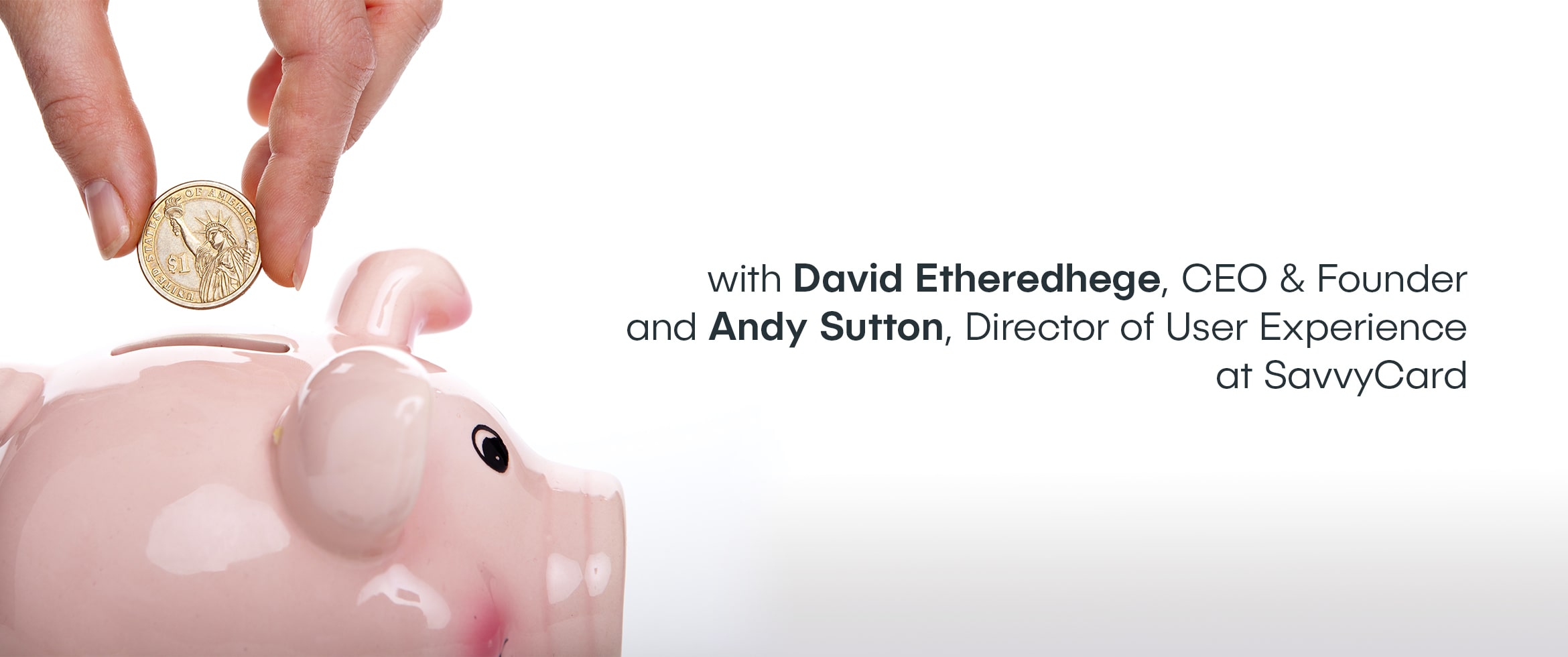
SavvyCard - Investing Early in Customer Experience & Growth

20 min read
SavvyCard is a startup in Tampa Bay that helps you easily and effectively reach new people through your existing networks and through social media platforms with compelling tools and content.
I got to sit down with the CEO and founder, David Etheredge, and the Director of User Experience, Andy Sutton, to talk about their early adoption of a customer success mindset and team.
The coolest thing about their approach is that it is holistic; the customer success team is the “connective tissue” of the company helping everything to move, function, and grow in a cohesive way that is always customer centric.
Megan: Very cool. Let's get into customer success now. I am curious as, Andy, you're head of User Experience and then customer success falls under that. So could you tell me a little bit about your customer success structure at SavvyCard?
Andy: Sure. So to revisit that initial point that I made, you know, a lot of people when you say user experience, they automatically conflate that with user interface. And they are related, user interface is a facet or component of user experience, but user experience at an organizational level is really about all of your users or customers' experiences with your organization. The software, the services, including support and training, sales, marketing, it is a holistic approach to the experience that people have with your organization. So that was the other big thing that influenced me to come SavvyCard, was the opportunity to really more fully integrate customer success, which for SavvyCard includes both customer support and training into a organizational level user experience approach.
So the way that we're structured is we have a pretty small team right now. We offer different formats, initial training through webinars and through one-to-one trainings. We also do some ad hoc one off things for a new client or, if there's an event at a client location, we will do our best to arrange some kind of training interaction for their members. And then the other facet of customer success for us is support. When people have questions or problems with the software, with the platform, they can reach out to us in a multitude of ways, chat, phone call, email, to get answers to questions, to get the help they need. And really, most often, the support interactions are like micro-trainings. They're questions about how do I do something, or how can I accomplish this goal using your plot forming platform?
Megan: And as a startup, so how early did you begin to invest in customer success and realize its need in your company?
David: So, when we started the company, I mean, the structure of the company is segmented into four different divisions. So we have Operations, we have Sales and Marketing, we have R&D, and we have Customer Success. So from the very beginning, when we were building the company we sort of segmented it into those four segments. After we got our initial sort of beta of our product developed and we started engaging customers, one of our first hires was our first customer success representative. So obviously, you need somebody that's going to be taking inbound phone calls from folks that are interested in learning more about your product.
And from our perspective, you don't always want that to be a sales transaction. You sort of want to lead with what is the problem that we can solve in the industry, or what is the value that we can create for you as a customer, and then let the sales transaction sort of organically evolve from that. Because if you're creating real value for people, and you're able to communicate that you understand their needs and their problems, and that you've got a solution that addresses those, invariably you get the question, "How much does it cost and when can I purchase it?" So I think it's always been one of the four foundational components of the business from day one.
Megan: Yeah. And so I know you guys are Florida Funders, right?
David: So yeah, we were actually the first company to take capital through Florida Funders. It was back in the earliest days when they were still sort of a platform for aggregating accredited investors. Now they've sort of evolved or pivoted into being an actual fund. So Florida Funders has participated in three of our different capital rounds to date.
Megan: Nice. And how did having a customer success foundation at the beginning help you with getting funding and proving that you have a sticky product, that you have something that's worth investing in?
David: So if you sort of go back and look at what are the primary things that an investor's really interested in understanding before they make a decision to invest in a company. First of all, they want to understand that you've got a great team. Right? That you have a group of people that are gonna stick with the startup. They're never gonna give up until they figure out market fit and they get to a successful result. So team's number one.
Number two is going to be market fit; that you've got a product that the customer sees value in and will purchase. But sort of the most important thing in terms of showing scalability, the potential for scaling a product, to me, is your ability to retain the customer, because there's a lot of really good sales people out there who can sell anything. They can sell ... They can basically sell anything to anyone. Right? But to create a sustainable business and a scalable business, you have to provide value on an ongoing basis, and you have to retain that customer when their monthly, quarterly, or annual subscription is up for renewal.
Not only do you need to retain the customer, but they need to have such a positive experience that they're out evangelizing your business on your behalf, and they're pulling new customers into the channel through that evangelization. This is even more critical today with social media, and the fact that people like to go out and talk about their experience. They particularly like to talk about negative experiences, but if you're creating value for somebody, you're going to get a certain number of evangelists who are in the channel saying, "This is a great product and you should use it."
So in that case, we're really talking about usage. Not are people willing to buy your product, but are they actually using the product to create value on a day to day basis? And I don't know of any more effective way to drive usage than to have an effective customer support, customer success organization that's out there telling the story of the product in the marketplace, and training people on its value and its utility, and constantly building a relationship with the marketplace, and evolving that relationship on a continual basis. And that, to me, is the primary ... That's the primary mandate of customer success.
Megan: Yeah. Definitely ... And I'm curious, so Andy, you are in both divisions. How has that helped you, and how have you made sure that what you're learning as a customer success manager effectively gets to R&D? Because you're kind of the line of communication there. What are some strategies that you have in place to make sure that that line of communication is always open?
Andy: Well that was another benefit, or that is another benefit to the structure that we have developed, that we have implemented here, is that the R&D team, and myself as a designer, as the user experience person who is also akin to a product manager, right? The discussion of what features should we introduce, and what features should we call from the product? What features are not gaining traction or are just taking up space? What can we get rid of to clear the cognitive clutter of our users? A lot of that information comes directly from the Customer Success team, whether it is being in a group training environment where people have questions. Well, how can I do this thing that I already do today with your product, or how can I do it better, or faster, or more efficiently with your product? Those kinds of questions are a window into the needs and desires of our users. And so to have me as the conduit by which that information and those ideas circle back into the Research and Development team is, to me, the best argument for this kind of arrangement.
And of course, the same is true in the other direction. As new features are added, I'm right there with the Customer Success team, letting them know here's what happening, here's what's being added, here's why, and how to implement that, how to integrate that into our ongoing narrative with our users about what the product is, what they can do with it, and how to best achieve their goals with the product as it is today.
Megan: Certainly. And are there any ways that you make sure you communicate with Sales on a regular basis? What is Customer Success' role in making sure that the Sales people are in touch with what's happening with the customers, or making sure not to oversell, or-
David: Longer term, I think a part of what we're going to be looking for Andy to do is to create formalized operational processes that make sure that we don't lose that entrepreneurial adaptability and sort of the agile ... We actually try to apply the agile R&D methodology in other areas, so we try to do sales pilots that are very agile and adaptable, and learn from them before we sort of set a product in cement and so forth. So I think the agile methodology works for an early stage startup, but then as we scale and we go to 40 employees or 100 employees, obviously we're gonna have to put more formal processes in place, but we're not there today.
And one of the benefits of the holistic approach to user experience that I talked about earlier is that the user experience function can act as that through line or that connective tissue as we do scale and add more people to these different functions. It's not that UX needs to, or even wants to own the sales function, and the marketing function, and all of those things, but it's good for there to be a singular function that, again, is that connective tissue, so that the marketing materials describe the product in the same way that the sales people attempt to pitch it to people; and so that the customer success team, as we deploy a product into an organization, is talking about things the same way that the sales team did to the people that were buying the product; and that when people call in for support, we're talking about things in the same way that ... So again, it gives us a level of consistency, organizational consistency, that is often lacking in organizations.
You know, it just occurs to me. I can give you one example of a process that we've just stood up recently that is primarily customer success focused, that is informing both R&D, it's forming marketing communications, it's informing investor relations, and pretty much everything else in the company. So I'll give you a specific example. We take analytics data and look at it on a weekly basis of our users, and we identify the top users on the platform. And so, what we realized was the top users are probably doing something. They're using the product in a way that is creating value for them.
And in some cases it's what we already know. We've taught them this. We've trained them, and they're just following our training. But in other cases there's going to be emergent behavior, right? There are going to be people that are using the product and they come up with an idea for how to use it that we've not thought of or we're not aware of, because we're not primarily subject matter experts in their business. They understand their business, and SavvyCard is a flexible enough tool that it can be used in a myriad of ways as a digital marketing asset. And so what we do is weekly we'll look at the top performers, and we were making some ad hoc calls to them and saying, "How are you using our product?"
And so recently Andy and I and the rest of the team sat down and said, "Let's formalize that. Let's identify the top performers that we haven't already talked to on a monthly basis, and let's reach out to them, and let's ask them how they're using our product. And if they're using it sort of consistent with the way that we're training, then that tells us that our training is effective, and if they're coming up with new ideas we add those ideas into our training process to improve the quality of training that we're giving. And also, it creates a big sort of inventory of user success stories that we can then re-circulate into the marketplace." So that's a formalized process that we have developed recently, and we expect to have dozens of other processes that are similar to that in the future.
Megan: Yeah. I love the idea of the holistic approach. That's a great way of putting it. In what ways do you think having this customer success mindset can help startups grow and stand out amongst others? Because maybe not everyone realizes it's significant, so in what ways do you think it can help you stand out as a company?
David: Well, so I'll talk to this from the investment's perspective, okay? And then Andy might be able to talk about it from a customer success, from more of a disciplinary standpoint. From an investment standpoint, I'm an angel investor as well, and one of the first things that I look for in an early stage startup is have they effectively gone out and interviewed a large enough sample size of potential customers to really understand whether their idea is relevant in the marketplace or not.
There's a great article that I read from Steve Case where he was brought in to look at ... I can't remember what program it was, but there was some national program that was focused on ... Might have been Startup America ... Actually, it was a federal program that was focused on giving grants to startups. And the program was having famously, or infamously bad results. Like, they were giving all this money out to startups, and they had a tiny, tiny percentage that were ever making it to the next milestone. So they're giving out all this money, and it wasn't actually generating any success stories in terms of startups that got future funding or actually became successful ongoing businesses.
And I guess Case came in and said, "Look, instead of just giving out money to startups based on an idea or what have you, why don't we require them to go do customer research first? That's the gating factor for us giving them money. And if they haven't gone and done customer surveys to understand whether there's even potential in market fit, then we don't want to support that company." So I think from a standpoint of why is customer success important to entrepreneurs, if you don't talk to potential customers and understand and define what success looks like for them, how do you know what product to build, how do you know how to price it, and how do you know whether or not you're going to be able to drive usage? You're just sort of guessing. You're throwing darts in the dark.
So that's where I would start as an investor. I would never invest in a company, an early stage company, that didn't walk in and say, "Here's 20 or 30 surveys from potential customers that indicate that our product has value, and that we're solving an understood and well-known market problem, and that it's going to ... Here's the ROI that it's going to generate in terms of time savings, or cost savings, or revenue increases." So fundamentally, that's a customer success conversation, I think.
Andy: Yeah. David, you really hit the nail on the head there. The facet of user experience that he's talking about is utility. Is our product something that people want or need to use? Does it address an explicit or implicit one-to-one need? The other two facets of the user experience are usability. Is it a product that's easy to learn, easy to remember, and easy to use, and visual ... I should say appeal, visual and emotional appeal. And having a strong commitment to a Customer Success team gives you that conduit to your users, and prospective users, and past users, to help you, again, understand what should the product do? What level of utility do we need to provide? What tasks and activities should we support our users accomplishing.
You know, especially in the spaces that we're in and that we're considering going into, we are not so much creating new things or providing tools for people to do new tasks. We want to understand what do you do today, what is your job, what is your goal, and then help you get there more quickly, more easily, more efficiently. And again, having that Customer Success team lets us really, really have a quality feedback loop on all of those areas: usability, utility, and a view.
Megan: There are two questions that I would like to ask you guys that I've been collecting from the interviews. One, what is your definition of customer success?
Andy: So for me, again, this goes back, really kind of echoes what I was just saying, is can we help our users achieve their goals and accomplish their tasks and activities that they need to do, or that they want to do, in a quick and easy fashion if we want to help them be successful at their job using our tool. We don't necessarily want them to be successful with our tool in a vacuum. You know, I guess that would be nice, but really, the true value that we're gonna provide to our users is we're gonna help them do the things that they want to do and need to do.
David: So for me, I would say, to add to that, I would say, from an organizational level, if we get to the point where our customers are functionally unpaid employees, that is the definition of customer success for me. Right? When you build an organization where your customers have such a strong communication channel, and have the ability to influence product decisions, and customer support decisions and so forth ... And it's just organic. It's a part of the way your organization operates. You're extending your organization from being a hundred people, to being a hundred plus your entire customer population.
So you're functionally crowdsourcing R&D, you're crowdsourcing sales strategy, you're crowdsourcing usage strategy, you're crowdsourcing all of this information from your customers, and they're happy to be a part of that because the more they're involved, the better the product gets, and the more utility it creates for them in the marketplace, and ultimately, the more money they make, or the more money they save, or whatever the value proposition is, because the product is constantly evolving based on their input. So that, to me, is ... The definition of customer success for us, at least, is when we get to the point where customers are functionally a part of our organization in such an integral way that it's impossible for us to unwind that.
Andy: And what David is describing is a company or organization at the top of user experience maturity model. Your organization, your products, your features, your services, your processes are all driven by users.
Megan: Yeah. Yeah. Great. Thank you guys, both. And then the second question that I like to ask is, when hiring someone onto your team, what qualities do you look for?
Andy: First and foremost, I always look for a good fit with the team. Personality wise, just that vibe, that feeling that you get. I can teach people our internal processes, I can teach them to use tools, I can teach them taxonomy and all of these other things. I can't teach them to be a good fit with the team. So to me, that's first and foremost. And then you want somebody that can do all those other things, that can learn internal business processes, they can learn a new tool, they have a good interaction style about them. Business like, but not brusque. We want somebody who likes to talk to people, really, when it comes down to it.
David: I just want to know whether they're going to bring Krispy Kreme doughnuts to the office once a week. That's-
Megan: That's important. That's good.
David: It's a low bar, right? But yes.
Megan: But it's an important standard, I agree.
David: I think from ... Listen, customer support, right? The traditional customer support model has been this sort of ... I don't even know how to describe it. It's been reduced to this least common denominator, right?
Andy: A strict driven interaction that the organization wants to close as quickly as possible without really any regard for the quality of that conversation or the outcome of that conversation.
David: Yeah. It's so many companies want to distance their customer as much as they possibly can. I mean, I hate the joke, and I hear it often, "Our business would be wonderful if we could just get rid of the customers." And to me, that's the opposite of what you want, right? There's all these statistics from social media, like someone goes in and makes a negative comment on Facebook, and you address that negative comment in a professional way, and you address it in a way that makes that customer happy, that truly takes care of their issue, that they become some of your biggest advocates. So every customer complaint, every problem in a customer success driven organization should be viewed as an opportunity to create an evangelist for life.
So we try to have this attitude where it's like, "Somebody complained today." Awesome, how do we fix it? Because we know that the value of fixing that complaint is going to be a force multiplier in terms of creating a quality brand image in the marketplace.
Andy: Yeah. Yeah. I think changing that perspective and making it a positive thing rather than a negative, because it's an ... Yeah, you're right. It's an opportunity, so that's a point.
David: That's right.
Join our newsletter!
Receive the latest news, updates, and invitations to our events.
Big thanks to Anika, and a cheerful hello to Malin!
A special podcast episode celebrating Anika Zubair's farewell and welcoming Malin Skoglund as our new host.
Customer success is not sales
Our host Anika Zubair chats with Brandon Ramsey, Head of Customer Success at OnsiteIQ about how to make sure customer success is not sales.
Planning for Customer Success in 2024
Our host Anika Zubair chats with Sue Nabeth Moore, Co-Founder of Success Chain about the future of customer success.
Learn more about
Planhat
Drop your email and let us show you our platform!
